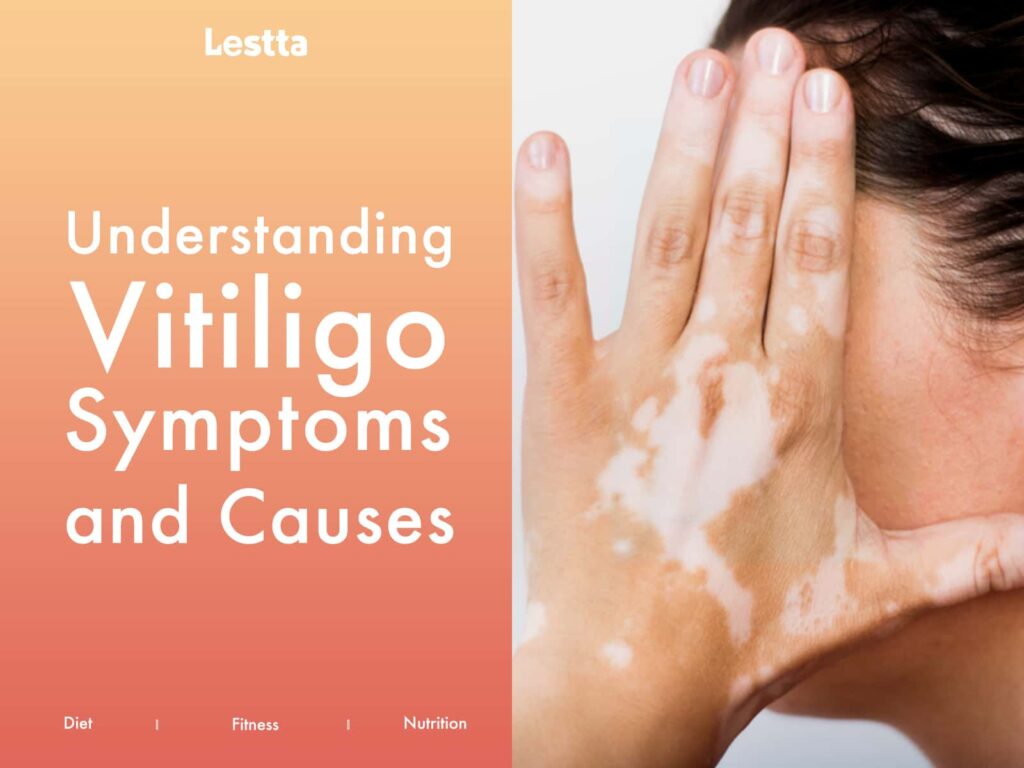
Vitiligo is a skin condition characterized by the loss of pigment in certain areas of the skin, resulting in white patches. In this article, we delve into the symptoms and causes of vitiligo, shedding light on this mysterious condition.
Understanding Vitiligo Symptoms
Firstly, vitiligo symptoms manifest as depigmented patches on the skin, varying in size and location. These patches often start small and gradually expand over time.
The most common areas affected include the face, hands, arms, feet, and genital areas. The edges of the affected skin may be darker or hyperpigmented. Vitiligo can also affect the hair, eyebrows, eyelashes, and even the inside of the mouth.
The appearance of vitiligo patches can cause emotional distress, self-consciousness, and a negative impact on self-esteem. Individuals with vitiligo may experience anxiety, depression, and feelings of isolation due to societal misconceptions and stigmatization.
Causes of Vitiligo
Secondly, while the exact case of vitiligo remains unknown, several factors contribute to its development. Here are some key factors associated with vitiligo:
- Autoimmune Disorders: Researchers believe that vitiligo may be an autoimmune disorder, where the body’s immune system mistakenly attacks and destroys melanocytes (pigment-producing cells). This autoimmune response leads to depigmentation in the affected areas.
- Genetic Predisposition: A family history of vitiligo increases the likelihood of developing the condition. Certain genes related to the immune system and melanocyte function play a role in the onset of vitiligo.
- Neural Factors: Some studies suggest that neurochemicals and nerve damage may contribute to vitiligo. Trauma, stress, and certain viral infections may trigger neural responses that result in depigmentation.
Quality of Life
Thirdly, living with vitiligo can have a profound impact on an individual’s quality of life. The emotional and psychological effects can be challenging to navigate. Society’s perception of beauty and the pressure to conform to traditional standards.
This often exacerbate the distress experienced by those with vitiligo. Education, awareness, and support systems play crucial roles in helping individuals with vitiligo overcome these challenges.
Conclusion
Finally, vitiligo is a complex skin condition that affects individuals physically and emotionally. The depigmented patches can be distressing, leading to feelings of self-consciousness and isolation. Although the exact cause of vitiligo is still unclear, autoimmune factors, genetic predisposition, and neural factors are believed to contribute to its development.
It is essential to foster understanding and acceptance of vitiligo, challenging societal norms and prejudices. Providing support and resources for individuals with vitiligo can help them navigate their journey with confidence and self-assurance.
By spreading awareness, embracing diversity, and advocating for inclusive beauty standards, we can create a world where vitiligo and other skin conditions are seen as unique and beautiful expressions of human individuality.









